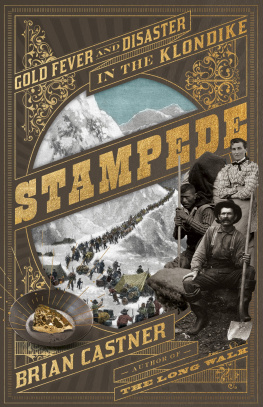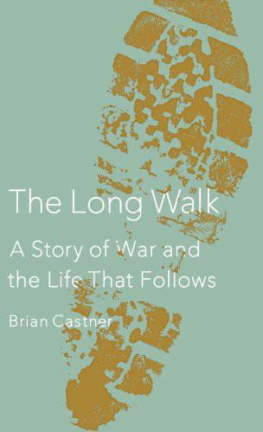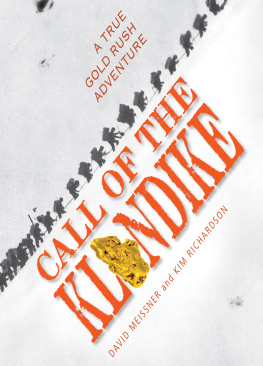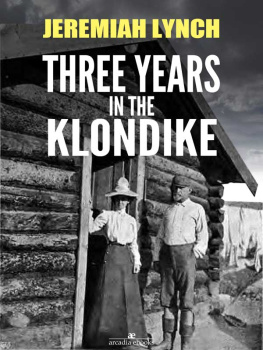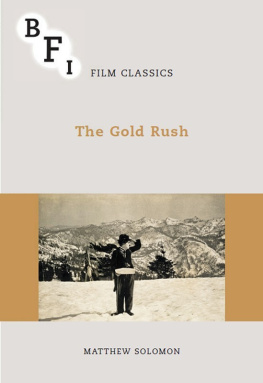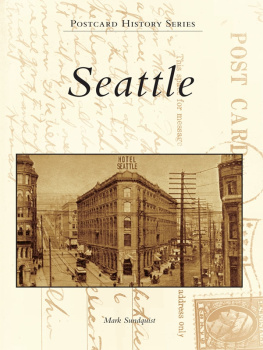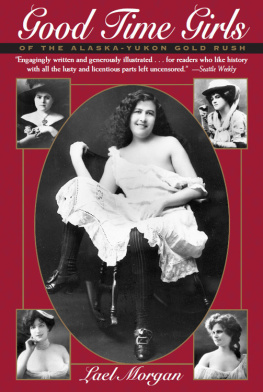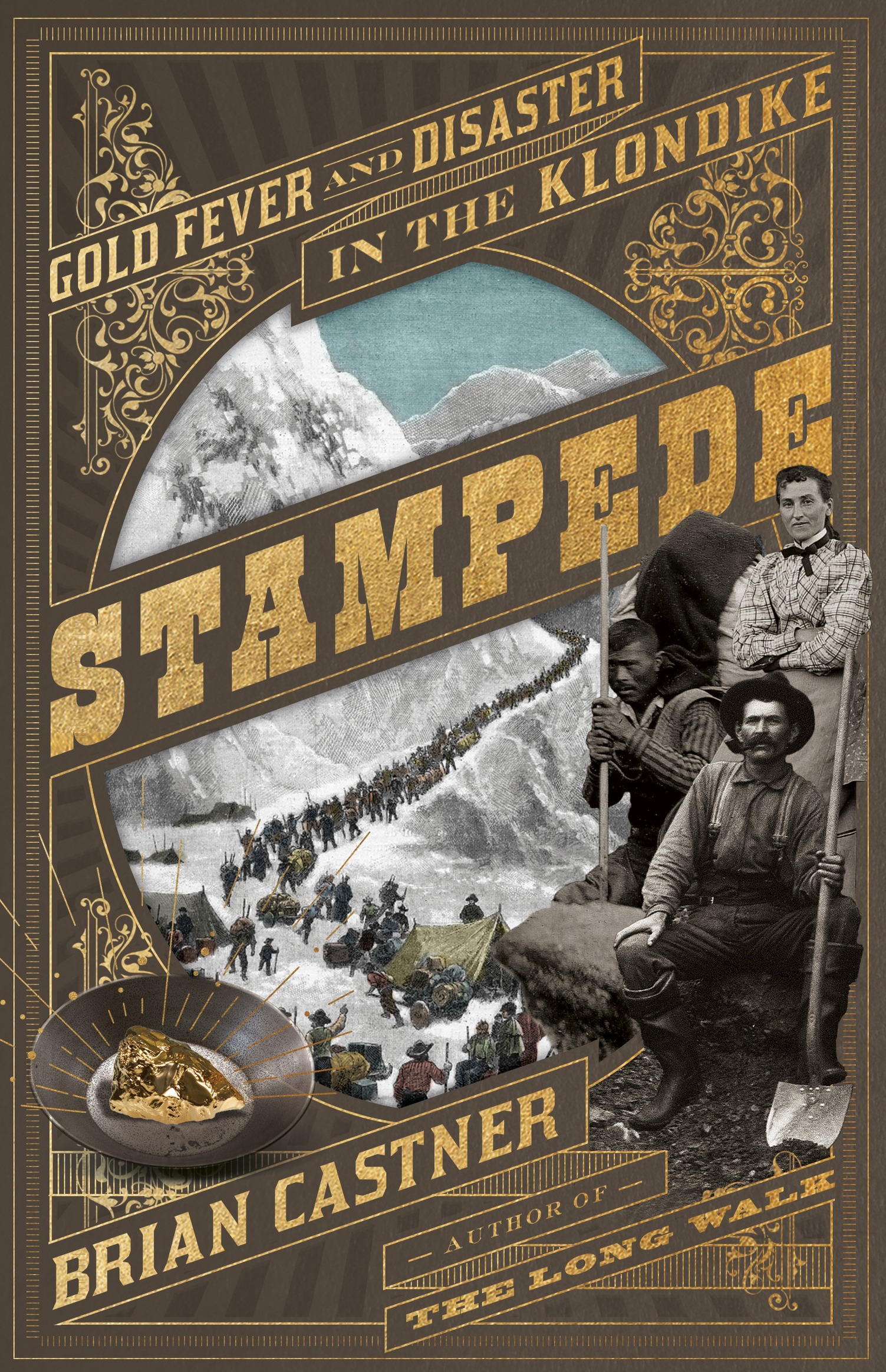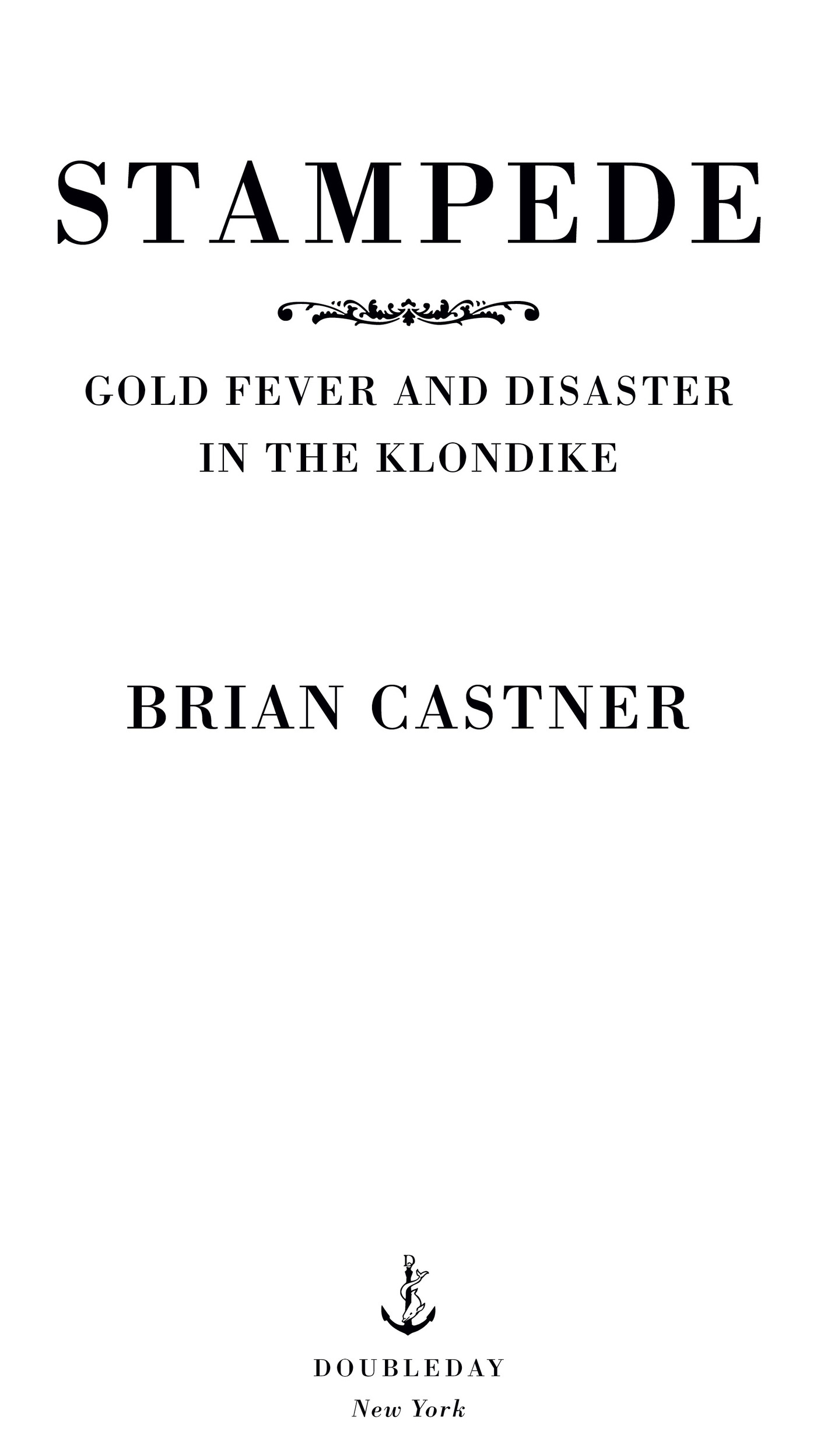also by brian castner
Disappointment River
All the Ways We Kill and Die
The Long Walk
The Road Ahead (edited with Adrian Bonenberger)
Copyright 2021 by Brian Castner
All rights reserved. Published in the United States by Doubleday, a division of Penguin Random House LLC, New York, and in Canada by Penguin Random House Canada Limited, Toronto.
www.doubleday.com
doubleday and the portrayal of an anchor with a dolphin are registered trademarks of Penguin Random House LLC.
Cover images: (clockwise, left) (miners pan) BW Folsom; (gold nuggets) Foto-Ruhrgebiet, both Shutterstock; (center) Chilkoot Pass. Stefano Bianchetti; (woman) Alexander Alland, Sr./Corbis; (man, right) Bettmann. All Getty Images; (man, left) LOC, Washington, D.C.; (ornaments) Lyotta/Shutterstock
Cover design by Michael J. Windsor
Library of Congress Cataloging-in-Publication Data
Names: Castner, Brian, author.
Title: Stampede : gold fever and disaster in the Klondike / Brian Castner.
Other titles: Gold fever and disaster in the Klondike
Description: First edition. | New York : Doubleday, [2021] | Includes bibliographical references.
Identifiers: LCCN 2020055497 (print) | LCCN 2020055498 (ebook) | ISBN 9780385544504 (hardcover) | ISBN 9780385544511 (ebook)
Subjects: LCSH: Klondike River Valley (Yukon)Gold discoveries. | Gold minersYukonKlondike River ValleyHistory19th century. | Gold mines and miningYukonKlondike River ValleyHistory19th century. | PioneersYukonKlondike River Valley. | Frontier and pioneer lifeYukonKlondike River Valley.
Classification: LCC F1095.K5 C37 2021 (print) | LCC F1095.K5 (ebook) | DDC 971.9/101dc23
LC record available at https://lccn.loc.gov/2020055497
LC ebook record available at https://lccn.loc.gov/2020055498
Ebook ISBN9780385544511
ep_prh_5.7.0_c0_r0
Contents
For my father, who told me stories of his own youthful adventures in Alaska,
and my mother, who stoked my love of books through endless visits to the local library.
Men, it has been well said, think in herds; it will be seen that they go mad in herds, while they only recover their senses slowly, and one by one.
Charles Mackay , Extraordinary Popular Delusions and the Madness of Crowds, 1841
Cast of Characters
(in order of appearance)
Robert Hendersona prospector from Nova Scotia
Joe Ladueapromoter and outfitter for the Alaska Commercial Company
George Carmacka shunned American who avoided white mans work
Kate Carmacka Tagish woman, Georges wife and Jims sister
Skookum Jima Tagish man of great strength
Tagish CharlieJims nephew
Clarence and Ethel Berrya husband-and-wife mining team from California
Tappan Adneya journalist and naturalist from New York
Jack Londona stampeder looking to escape factory work
Arthur Arnold Dietzfounder of the New York and Bridgeport Mining Company
Samuel Steelecommander of the North-West Mounted Police
Belinda Mulrooneyowner of the Grand Forks and Fairview hotels
John J. Healya merchant who roamed the West
Jefferson Soapy Smitha gangster and notorious bunco man
Anna DeGrafa veteran stampeder whom everyone called Mother
Authors Note
The end of the nineteenth century was a deeply racist and violent era that I attempt to portray authentically, using language of the time. To that end, many characters in this book express a number of racial stereotypes and use a variety of epithets that many readers will find deeply offensive. I find them offensive as well. I repeat them only as required, and in service of a historically accurate story.
As a basic guide, throughout this book multiply all historic monetary values by 30 to make an approximate comparison to modern currency. So a 10-cent hourly wage in 1895 would convert to about $3 in 2021.
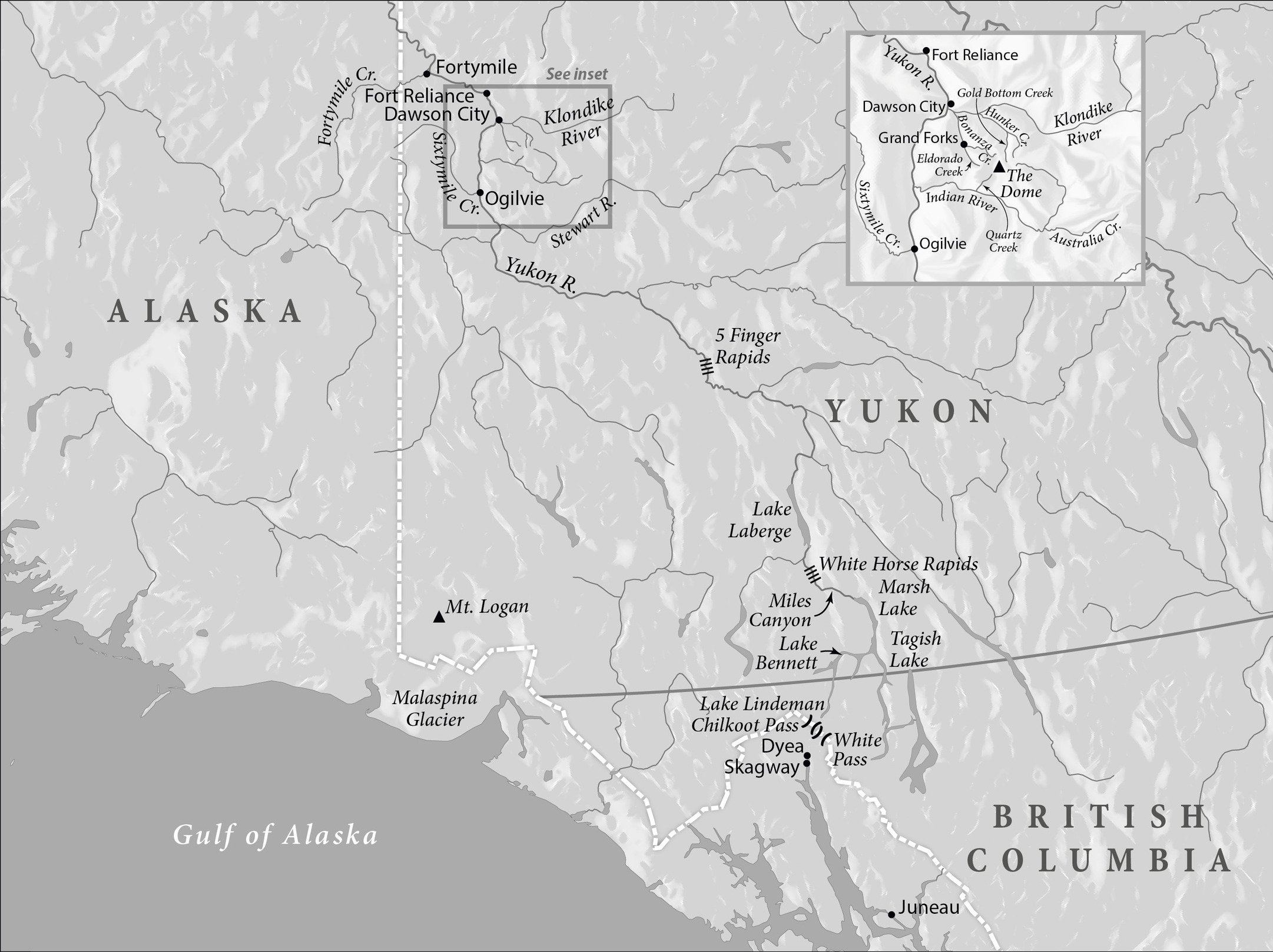
CHAPTER ONE
1895
I am not fit to live among civilized men.
Robert Henderson
In those days the men who panned for gold in the streambeds of the Yukon valley would often work with a partner, to avert lonesomeness or starvation or worse, but Robert Henderson was his own man, never could find another who matched his endurance for misery, and so when he slipped while crossing an icy creek there was no one there to right him, and he fell, fell hard, and impaled himself upon the broken shards of a downed pine.
Henderson had been working his way across a tree trunk that he had dropped for a makeshift bridge, axe in his right hand, bracing himself against a limb with his left. Below, the stream rushed as a snowmelt cataract. He swung and chopped away the branches that barred his path but then the limb in his hand snapped and his feet came out from under him in a flash.
Henderson tumbled toward the torrent of water. Then sudden blinding pain as the jagged stump of a branch speared the flesh of his calf and wrenched him to a halt midair. There he hung on a hook, like an animal snared in a toothed foot-trap, dangling head-down over the flooded stream.
He was all alone. His axe was still in his hand.
With a lurch Henderson yanked himself up, the bloody stake straining against the tendons in his leg, and he swung hard with his axe. The blade bit and held and Henderson pulled and his chest met the trunk and he clutched it in a bear hug. His leg was somehow free but he dared not fall, and inch by inch he pulled himself to the bank.
Henderson sat in the muddy slush on the creek edge. A bad wound, he thought. He lowered his mangled leg into the ice-cold water and it numbed immediately. The creek went pink, then clear, and he pulled out the leg. He knew he could not walk. It was May, the days were long now, the sun warming, and yet snow still lay thick and the frozen Yukon River had not yet broken.
He was stranded, cut off, hungry, and lame. No one knew where he was, and even if they did, no one could reach him. Fifty hard miles to the nearest settlement, and the rapidly melting rivers were ready to rupture at any moment.
He set camp and prepared for a long wait. He carried very little. Flour, sugar, salt, a small bit of tea. Rifle, pistol, shovel, and pan. His clothes were rags, patches of wool and furs and buckskin, and his hobnailed boots were held together with burlap sacks. His last resupply at the trading post at Ogilvie, the last time he had seen another man, was the year before.
Henderson was blue-eyed, tanned, tall and lean like timber. He was nearly forty years old, no longer a young man, and his face was sunken, overcooked, all the fat drained off. He wore a long mustache that drooped at the corners of his mouth and occasionally got caught in his teeth. Old-timers called him a born prospector. He had the gold fever. He must, to spend the winter cutting trail from the Indian River all the way up Australia Creek, melting snow to wash gravel in the darkness. And for nothing but a few colors, a few specks of gold, two cents to the pan.

